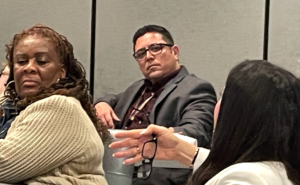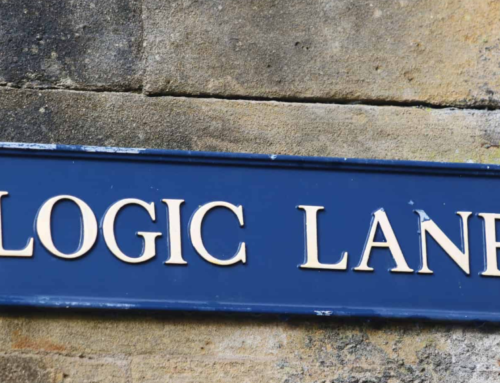I returned recently from the annual conference of the California Charter Authorizing Professionals, a hardy band of brave education leaders who have shouldered a great deal of responsibility even while being handed too few resources to do their jobs. In effect, they are expected to create both guardrails and guidance to keep 1,300 charter schools on the road to improvement.
Nationally, authorizers are succceeding. According to researcher Macke Raymond from the Center for Research in Educational Outcomes at Stanford University, charter folks are succeeding nationally. The third installment of her 20-year longitudinal study showed that charter schools delivered the equivalent of 16 days of additional learning in reading than did matched schools nationally. If a charter school were part of a charter management organization, it delivered 27 days of additional learning in reading. Ms. Raymond credits their success in large part to the wisdom of authorizers. That wisdom isn’t just knowing which new charters to approve, and which struggling schools to close. The wisdom in practice I’ve seen in California, especially in Riverside County, includes helping existing schools prosper.

Mefula Fairley (left, leader of Santa Clara CoE charter team) and Indra Ciccarelli (right, leader of the Los Angeles CoE charter team).
At the CCAP conference, I was impressed on hearing a range of stories of that wisdom in action. Here are a few of them.
- In Alameda County, the county office team, led by Juwen Lam, favors frequent communications. Every two weeks, charter operators are getting briefings and reminders of impending deadlines, and more. They even reach out to the board members of the charter schools they authorize, covering all bases.
- In Los Angeles County, Indra Ciccarelli leads his team to provide a steady flow of feedback to the many charter schools they’ve authorized. Stat books anchor everyone to a shared body of facts. Among those facts are test scores not just from the state’s CAASPP assessment but from a handful of interim assessment providers. The art and science of building sound evidence and making correct inferences is a discipline his team commands. That team includes an ex-rocket scientist and a card-carrying mathematician. Their team’s skill level is high, and their focus is on results.
- In Riverside County, the authorizing team at the county office (Corey Loomis, Kelly Inouye and Everardo Carvajal) is developing what they call a responsive authorizing approach in working with their 15 charter schools. One of their school leaders, Jennifer Cauzza from JCS Julian Charter School, who spoke at their presentation, called this something like a parent-child relationship. It combines the firm hand of review by the numbers, with the softer hand of coaching, guiding and mentoring.
- Riverside CoE also provides leaders in their 15 charter school portfolio comparative evidence in visual form, and a fifteen-hour seminar in applied measurement. They explained ther rationale for this effort in this presentation. (Self-interest notice: the K12 Measures team I lead delivers both the evidence and the professional development. We are happy to be part of their responsive authorizing program, one of many gifts they bring to their schools’ leaders.)
The Less Fortunate Authorizers
But these authorizers are the lucky ones. They come from county offices with deeper resources. Consider the difficulties faced by those authorizers working in districts who have far fewer resources, and who face the charter-district competition for students and staff. In these districts, critics of charters see every charter school authorized or renewed as a subtraction from the authorizing district. But advocates of charters see the gains for students and families as far outweighing whatever management challenges a district must face. This competition sometimes gets fierce.
One example of a district authorizer who carries a great deal of responsibility with too few resources is Amanda Goldman from Sacramento City USD. She has 16 schools in her portfolio, and only one other person on her team. In a district notorious for labor-management conflict and in-fighting, she is striving to bring a level hand and sound judgment when considering her schools’ renewal petitions.
Other authorizers are in the boonies, based in small, rural districts. These leaders have little time do a good job supporting or evaluating the charter schools they’ve authorized. Some are reluctant authorizers, in fact, having been pressed into service. In California, oddly once a charter founding team brings a petition to their doorstep, they are unable to decline becoming the de facto authorizer. However, I met one man at this conference who is determined to aid these smaller authorizers: Yuri Calderon, the new executive director of the Small School District Association. He has big plans, and the resolve to fulfill them.
The CDE Is Not Helping
What does the California Department of Education (CDE) do to help authorizers prevent fraud? Astonishingly little. The CDE has no Inspector General’s office to police academic fraud. Financial fraud is no one’s responsibility inside the CDE. (FCMAT’s mission is different.) The CDE doesn’t even have a “hot” line for whistleblowers to call when reporting suspected fraud. These factors helped make possible the shocking A-3 charter fraud operation which ran for over four years, and drained $400 million from the state’s treasury. (Note that prosecution did not even lead to prison time.)
The CDE’s policies on how charter authorizers should evaluate renewal petitions is vague where it needs to be crisp and clear (e.g., not defining one year’s growth). And given the problems with AB1505, the policy clarifications that might have helped authorizers and charter school leaders were missing in action. For example, what exactly is the mark when an LEA authorizer suffers financial hardship sufficient to become a reason to deny a school’s renewal petition? The absence of clarity can lead to wasteful conflicts. Case in point: the fight over Mayacamas Charter School in Napa County has pitted the school’s defender (the Napa County Office of Education versus Napa Valley USD in a long, drawn out fight that has mainly benefited the lawyers who represent both sides at great cost to taxpayers.
The statewide authorizers’ organization, California Charter Authorizing Professionals (CCAP) has boldly taken the lead on the fraud front, convening an anti-fraud task force and handing recommendations to higher-ups as well as members. I’ve read their recommendations, and they are smart and practical. Their recommendations should be applied everywhere. But why isn’t the CDE more active in detecting fraud in all districts and schools? According to one well-placed source I spoke with at the conference, fraud continues now in the light of day, with CDE people apparently asleep as they mail out apportionment checks to bad actors with numbing regularity.

These hikers are trying to find their way out of the woods and discover their compass is broken. When the CDE hands authorizers a broken dashboard, no wonder they feel apprehensive.
But to make matters worse, the CDE hands authorizers and charter operators a broken accountability instrument and tells them they must use it to when evaluating renewal petitions. That broken instrument is the CDE’s Dashboard. And like a broken watch, it will tell the time correctly twice a day – quite accidentally. If you care to read my essays on the logical and arithmetic errors baked into the Dashboard, just click here.
I spoke at the conference about the Dashboard’s flaws, and shared a case study of two schools whose academic qualities were deeply misrepresented by the Dashboard. One was Winston Churchill Middle School (San Juan USD) whose students attained high test scores, but who learned about one-third less each year than the average student in the U.S. (Source: See school #6 on this view of learning rates by the Stanford Educational Opportunity Explorer analysis of test results from 2009-2019.) Despite this, the Dashboard renders this middle school as a highly effective one. The other was Yuba River Charter School, whose kids’ test scores skew low, but who are learning about 1.8 times as much in a year as the average student in grades 3-8 in the U.S. (See school #1 on the same visualization.) This school the Dashboard mischaracterized as a troubled school with weak academic performance indicators.
Come on, CDE. Either get with it or get out of the way. Quit putting barriers in the road that make the jobs of authorizers harder, and which cause reputational harm to schools. Perhaps the Hippocratic oath taken by doctors would be a good starting point. Do no harm.






